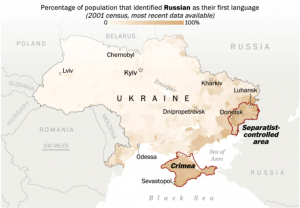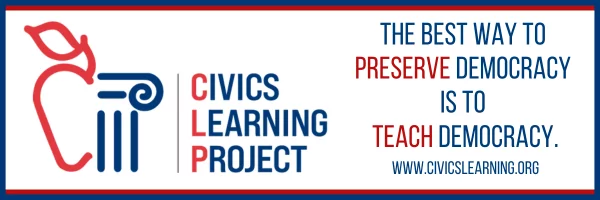
On February 24, 2022, the North Atlantic Treaty Organization’s (NATO’s) Secretary General announced that “peace has been shattered” in the continent of Europe and characterized Russia’s invasion of Ukraine as a “brutal act of war.” The Russian show of force started in 2014 with the annexation of Crimea but most recently escalated as Russian troops invaded Ukraine’s borders. As a debate about next steps continues, many Ukrainians are fleeing while others take up arms to resist the Russian forces.
Countries as far away as Japan and Australia responded to Russia’s invasion by joining the European Union, the United Kingdom, and the United States in applying immediate sanctions including travel bans for Russians, freezing financial assets, halting pipeline projects, restricting banking, and suspending trade.
On February 25th, President Biden joined an emergency meeting of NATO leaders to activate defense plans. According to the Pentagon’s press release, the U.S. is deploying additional forces to NATO’s eastern flank. The United States already had around 90,000 troops stationed in Europe, many of whom are now mobilizing to defend against Russian aggression into Ukraine.
So, what is NATO?
Following the end of the Second World War, western allies worried that the Soviet Union’s influence would spread across the globe. Specifically, the United States and European allies were concerned that, through pressure from the USSR, nations around the world would adopt a communist government and align themselves with the expanding Soviet empire. In light of these concerns, western nations decided there was strength in numbers, and a unified block of countries would help ensure the safety of its member nations. In 1949, The United States hosted a summit in Washington D.C. that resulted in a military alliance known as the North Atlantic Treaty Organization (NATO). The twelve allied nations agreed in Article 5 of this treaty that an attack against one country would be treated as an attack against them all. Throughout the Cold War era, NATO was a key mechanism for responding to Soviet action. In response, in 1955, the USSR was joined by neighboring European countries in creating its own military alliance, known as the Warsaw Pact. Throughout the decades during the Cold War, the global struggle for economic and political influence was carried out by these two military forces.
Since its inception, NATO has increased its membership multiple times to arrive at the current tally of 30 member nations. The addition of former Soviet states to this once strictly western military alliance has triggered the ire of Russian leaders from Boris Yeltsin to Vladimir Putin. It has been observed that the recent request of Ukraine to join NATO is perhaps one of many causes of Russia’s current invasion of Ukraine.
In addition to being instrumental in NATO’s creation, the United States continues to play a key role within the organization. Since NATO’s inception the post of Supreme Allied Commander of Europe (SACEUR) has been held by military leaders from the United States exclusively. At present, General Tod D. Wolters of the US Air Force holds the role. Additionally, the United States is far and away the biggest economic supporter of NATO, contributing 69% of the group’s defense spending last year. In recent years, the debate over the relevance of NATO and the United States’ role in the organization has grown louder. This debate continues, though now under the cloud of the invasion of Ukraine by Russian forces, and European countries’ dependance on the U.S. to stifle any further Russian ambitions of expansion.
This week’s Current Events resources examine the Russian invasion of Ukraine and NATO’s role in the conflict. The resources shared provide information and context surrounding the multi-national defense organization, as well as the military invasion of Ukraine.
Looking for more current events resources? Sign up at our We the Teachers Educator Resource Community page, where you can find all of our Current Events, and learn about our other programs!
Essential Questions, Vocabulary & Extend the Resources:
- What are sanctions? Why is the U.S. using sanctions against Russia in response to their invasion of Ukraine?
- What are the advantages and disadvantages of military alliances with other countries?
- What is the significance of the North Atlantic Treaty Organization (NATO) in the current conflict between Russia and the Ukraine?
- What is the U.S.’s role in NATO? Why are they positioned the way they currently are within the organization?
- What federal governing documents and rules grant or limit the U.S.’s involvement in international conflicts?
- What role does the Constitution play in the United States’ position on the invasion of Ukraine?
- In your opinion, what is the role and the responsibilities of a federal government in protecting national security and a country’s involvement in international conflict?
Click here for a hardcopy of the Essential Questions & Ukraine Invasion and NATO Vocabulary
Click here for a hardcopy of the Extend the Resources handout with suggested lesson activities and extensions
Videos:
Podcasts:
Why NATO Is at the Center of the Russia-Ukraine Conflict, The Journal, February 18, 2022
Putin had a lot of options. He chose the most aggressive one, Talking Points Memo, February 24, 2022
Retired U.S. Admiral James Foggo analyzes Russia’s attack against Ukraine, All Things Considered, NPR, February 24, 2022
Background Resources:
- The NATO Treaty, North Atlantic Treaty Organization, April 10, 2019
- NATO: The World’s Largest Alliance, World 101, accessed February 25, 2022
- Enlargement, North Atlantic Treaty Organization, May 5, 2020
- How the World Works, and Sometimes Doesn’t, Council on Foreign Relations, accessed February 25, 2022
- Military Alliances of the World, The Foreign Policy Institute, February 14, 2020
Images & Infographics:

“What parts of Ukraine does Russia currently control?”, Washington Post, February 24, 2022
Recent Articles:
What are sanctions? What you need to know about the crisis in Ukraine, USA Today, February 22, 2022
The U.S. keeps turning to sanctions despite their mixed record, NPR, February 24, 2022
Will US help Ukraine in war vs. Russia? American troops bolster NATO in Europe, USA Today, February 24, 2022
NATO vows to defend its entire territory after Russia attack, AP, February 24, 2022
World leaders slap sanctions on the Kremlin over invasion, AP, February 25, 2022
How NATO’s expansion helped drive Putin to invade Ukraine, NPR, February 25, 2022
From homes in the Northwest, Ukrainian-American watch Russia’s invasion with anger and anxiety ,OPB, February 25, 2022
Recent Editorials:
There is no NATO open-door policy, The Hill, accessed February 26, 2022
Laundered Money Could Be Putin’s Achilles’ Heel, New York Times, February 24, 2022
Sanctions Are Not Enough, National Review, February 26, 2022
Lesson Plans:
Lesson of the Day: ‘The Invasion of Ukraine: How Russia Attacked and What Happens Next’, NY Times, February 24, 2022
Latest News and Context: Ukraine, Newsela, February 2022.
The Ukraine Crisis, Choices Program, Brown University, February 2022
NATO: Its Past, Present, and Future, Foreign Policy Research Institute
The North Atlantic Treaty Organization (NATO), C-Span Classroom
Lesson Plans for Elementary Students:
Explainer: What is NATO, and what is its role in the Russia-Ukraine crisis?, Newsela, February 14, 2022
“The worst sunrise in my life”: Ukrainians wake to Russian attack on multiple fronts, Newsela, February 24, 2022
Russia Attacks Ukraine, Shattering European Peace, ActivelyLearn, February 24, 2022
Media & News Literacy Lesson Plans:
Media Literacy Resources – Newseum
Resource Library – News Literacy Project
News & Media Literacy Lessons – Common Sense
Media Misinformation, Viral Deception, and “Fake News” – University of Wyoming
Evaluating Sources in a ‘Post-Truth’ World: Ideas for Teaching and Learning About Fake News – New York Times Lessons





